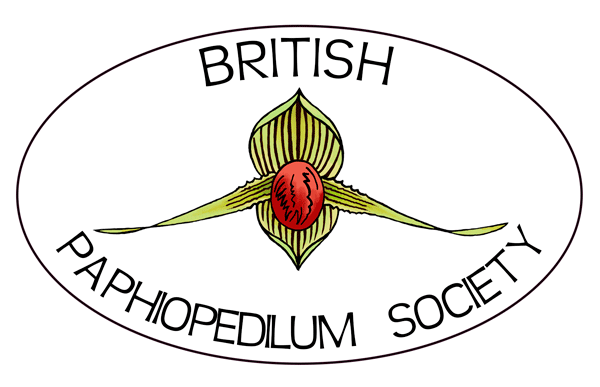Phragmipedium Culture by Arthur Deakin & Hilary Hobbs
These orchids, which come mostly from Ecuador and Peru, live in a wide range of habitats. This means that they are subjected to varying light, temperatures and humidity and therefore these notes only provide a general guide to cultivation.






A selection of Phragmipedium species
Watering
All of these plants like their “Feet Wet” and should be kept moist at all times. As a guide you should water every two or three days in summer and once a week in Winter, with something in between for Spring and Autumn. Rain, or reverse osmosis water is preferred with a pH between 6.2 and 6.8 if possible. The only exception is kovachii which seems to like harder water at a pH of 7.0+. If you are brave you can stand the plants in trays of water during the summer, which is a death sentence to most other orchids.
Fertiliser
Like most orchids they do require feeding to get good growth, but generally you should not exceed 300ppm for species and hybrids. The exception to this is any plant of longifolium and its hybrids which will take 500ppm without burning the roots. A good balanced feed works well as too
much nitrogen makes for soft growth in many of the species.
Temperatures
Success can be achieved in a wide range of temperatures but most phragmipediums like a minimum night temperature of 13/ 15C, with a daytime rise of 10°C if possible.
Humidity
A range of between 50% to 70% relative humidity should be maintained. More than this can cause significant problems with fungal disease in new growths and buds rotting away. Less than this can cause issues with bud drop and red spider mite.
Light
Moderate levels seem to work well for these plants. Around 1500 to 2500 foot candles provides strong growth; it is essential to look at your plants to check if the leaf colour is a mid-green and move as necessary. Caudatum types have harder leaves and will flower and grow better with more light.
Repotting
Because of the frequency of watering they require regular repotting as the compost breaks down or becomes tainted with the build-up of salts. Annual inspection is recommended, repotting into a moisture retentive but free-draining compost. Success is achieved with mixes based on bark or rockwool cubes and plastic pots to retain the moisture.
Pests & Diseases
There are relatively few pests that attack Phragmipediums. These include mealy bugs, thrips and scale insects and can usually be successfully treated with insecticides. Bacterial Infection causing rot is the most serious threat to Phragmipediums and is responsible for more plant losses than any other disease.
Brown-black rot is caused by Erwinia cyripedii and soft rot by Pseudomonas cypripedii. Both cause similar symptoms. The rot is usually first noticed as a watery brown area at the base of the leaf. The rot sometimes smells. Vigilance is essential as these infections spread very rapidly and if the rot reaches the crown the infection may become systemic and the plant will die. If the infection is treated promptly the plant can usually be saved. No antibacterial agents are available for treating this disease but rot in Phragmipediums does respond to powdered cinnamon. Treatment is to remove the whole leaf being careful not to touch the infected area or let it touch other leaves or nearby plants as bacterial rot is very infectious. If the rot is near the tip of the leaf that part can be cut off with sterile scissors. If several leaves on a growth are infected, then the entire growth needs to be removed. If several growths are infected the plant should be destroyed. Dust any cut surface with powdered cinnamon, keep the plant drier and place near a fan. Repotting is also recommended. Occasionally rot is caused by fungal infection or there may be a secondary fungal infection so treatment with a fungicide spray may also be considered.
Prevention of rot is important although not always successful. Hygiene and good air movement are important, also ensuring that no water is left on leaves or in the growths overnight. Calcium is a key nutrient in prevention of bacterial / fungal problems. Always use a fertiliser that contains calcium and top dress the compost with oyster shell.
References
There are several reference books available relating to Phragmipedium culture. Personally I use Tropical Slipper Orchids by Harold Koopowitz and Orchid Species Culture by Baker&Baker.
The internet is also a useful source of information. I like the Slippertalk Forum which deals with both Phragmipediums and Paphiopedilums.
As with most genera the hybrids are much more forgiving than the species. Some of the the latter have specific cultural requirements which can be hard to recreate and therefore I would recommend people to start with hybrids and when they have succeeded with them try some species.






A selection of Phragmipedium hybrids



